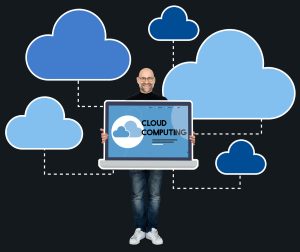In today’s fast-paced development landscape, DevOps automation is essential for building, testing, and deploying software quickly and reliably. DevOps isn’t just a set of tools—it’s a culture of collaboration and efficiency powered by automation software.
From continuous integration and deployment (CI/CD) to infrastructure as code and monitoring, the right DevOps automation software can dramatically reduce human error, shorten release cycles, and improve product quality. In this guide, we’ll explore the best software for DevOps automation in 2025, including open-source and enterprise-ready solutions that power modern development pipelines.
Why DevOps Automation Tools Matter
DevOps automation brings consistency and speed to software delivery. Instead of manual configurations, repetitive tasks are handled through reliable, repeatable workflows. This results in:
-
Faster deployment cycles
-
Fewer production errors
-
Streamlined collaboration between dev and ops teams
-
Real-time feedback on builds, tests, and deployments
-
Scalable infrastructure management across environments
Best Software for DevOps Automation in 2025
1. Jenkins
Jenkins is a leading open-source automation server used for building, testing, and deploying code. It supports a vast plugin ecosystem for integrating with other tools.
Key Features:
-
Declarative and freestyle pipeline support
-
1800+ plugins for extensibility
-
Distributed build capabilities
-
Seamless integration with Git, Maven, Docker, etc.
-
Open-source and highly customizable
2. GitHub Actions
GitHub Actions is a CI/CD platform built directly into GitHub repositories, allowing developers to automate workflows natively within their codebase.
Key Features:
-
YAML-based workflow configuration
-
Matrix builds and parallel jobs
-
Triggers for pull requests, pushes, and more
-
Built-in secrets management
-
Marketplace with pre-built actions
3. GitLab CI/CD
GitLab CI/CD is a fully integrated DevOps automation platform that covers code versioning, pipelines, issue tracking, and deployments in one interface.
Key Features:
-
Auto DevOps templates for rapid setup
-
Integrated with GitLab repositories
-
Supports Docker, Kubernetes, and Helm
-
Visual pipeline editor
-
Role-based access and audit logging
4. CircleCI
CircleCI is a powerful CI/CD platform designed for speed, scalability, and flexibility. It supports cloud-based and self-hosted deployments.
Key Features:
-
Parallel job execution and caching
-
Docker-native builds and orbs (reusable packages)
-
Insights dashboard for build metrics
-
Native support for GitHub and Bitbucket
-
Config-as-code approach using YAML
5. Ansible
Ansible is an open-source automation engine for configuration management, application deployment, and orchestration—without needing agents.
Key Features:
-
YAML playbooks for task automation
-
Agentless architecture using SSH
-
Idempotent and human-readable scripts
-
Ansible Galaxy for pre-built roles
-
Integrates with cloud providers (AWS, Azure, GCP)
6. Terraform
Terraform by HashiCorp is an infrastructure-as-code (IaC) tool used to provision, change, and manage infrastructure in a predictable and safe manner.
Key Features:
-
Declarative language (HCL)
-
Multi-cloud support (AWS, Azure, GCP, Oracle)
-
Modular and reusable configurations
-
Built-in state management and versioning
-
Extensive provider ecosystem
7. Puppet
Puppet is a mature configuration management tool that helps automate infrastructure provisioning and enforce compliance across environments.
Key Features:
-
Model-driven approach with Puppet DSL
-
Agent-based and agentless modes
-
Role-based access control and audit trails
-
Enterprise dashboard and reporting
-
Integrates with CI tools and cloud platforms
8. Docker
Docker revolutionized DevOps by enabling containerized application delivery. It’s a core component in modern DevOps workflows.
Key Features:
-
Lightweight containers with isolated environments
-
Docker Compose for multi-container setups
-
Build, ship, and run apps consistently
-
Supports all major OS and cloud platforms
-
Integrates with CI/CD and Kubernetes
9. Kubernetes
Kubernetes is an open-source container orchestration platform for automating deployment, scaling, and operations of application containers.
Key Features:
-
Declarative configuration with YAML manifests
-
Horizontal pod autoscaling
-
Self-healing and rolling updates
-
Works with Docker, containerd, and other runtimes
-
Integrates with Helm, Istio, and cloud-native tools
10. Argo CD
Argo CD is a declarative GitOps continuous delivery tool for Kubernetes. It pulls configurations from Git repositories and syncs Kubernetes clusters automatically.
Key Features:
-
Git as the single source of truth
-
Visual UI for application state monitoring
-
Automated rollback and self-healing
-
Role-based access control
-
Lightweight and cloud-native
11. Spinnaker
Spinnaker is a continuous delivery platform designed for multi-cloud deployments. It’s used by enterprises for safe and scalable releases.
Key Features:
-
Canary deployments, blue/green, and rollback
-
Integration with AWS, GCP, Azure, and Kubernetes
-
Built-in pipeline management and triggers
-
Fine-grained RBAC and auditing
-
Real-time deployment monitoring
12. Prometheus
Prometheus is a monitoring and alerting toolkit designed for time-series data. It’s often paired with Grafana for observability in DevOps environments.
Key Features:
-
Multi-dimensional data model
-
Powerful query language (PromQL)
-
Pull-based metrics collection
-
Alertmanager integration
-
Native support for Kubernetes metrics
13. Nagios
Nagios is a veteran infrastructure monitoring tool known for its extensibility and active plugin community.
Key Features:
-
Monitors servers, apps, and network protocols
-
Alerting and escalation policies
-
Agent-based and SNMP support
-
Performance graphing with plugins
-
Custom script support for checks
14. Azure DevOps
Azure DevOps provides a suite of tools for version control, pipelines, testing, and package management—all integrated into Microsoft’s cloud ecosystem.
Key Features:
-
Azure Pipelines for CI/CD workflows
-
Boards for Agile project tracking
-
Repos for Git version control
-
Artifacts for package management
-
Deep integration with Microsoft Stack
Comparison Table
| Tool | Category | Best For | Open Source | Cloud Support | Key Strength |
|---|---|---|---|---|---|
| Jenkins | CI/CD | Custom pipelines | Yes | Yes | Plugin ecosystem |
| GitHub Actions | CI/CD | GitHub-based projects | Yes | Yes | Native GitHub integration |
| Terraform | IaC | Multi-cloud provisioning | Yes | Yes | Infrastructure as code |
| Ansible | Config Mgmt | Agentless automation | Yes | Yes | Simplicity and readability |
| Docker | Containerization | App packaging and delivery | Yes | Yes | Portability |
| Kubernetes | Orchestration | Managing containers at scale | Yes | Yes | Auto-scaling, self-healing |
| Prometheus | Monitoring | Time-series performance tracking | Yes | Yes | Alerting and custom metrics |
| GitLab CI/CD | CI/CD | All-in-one DevOps | Yes | Yes | Built-in CI/CD & SCM |
| Azure DevOps | Full Platform | Microsoft ecosystem | No | Yes | Full DevOps lifecycle |
How to Choose the Best DevOps Automation Software
Choosing the right tool depends on your team’s size, goals, tech stack, and workflow maturity. Here are some considerations:
-
CI/CD Pipelines: Use Jenkins, GitLab CI, CircleCI, or GitHub Actions
-
Infrastructure as Code: Terraform and Ansible are best-in-class
-
Containerized Workflows: Combine Docker with Kubernetes and Argo CD
-
Monitoring and Alerting: Prometheus and Nagios offer robust solutions
-
Multi-cloud Deployments: Use Spinnaker or Terraform for orchestration
-
Integrated Ecosystems: Azure DevOps or GitLab provides all-in-one platforms
Conclusion
DevOps automation is no longer optional—it’s essential for delivering software at the speed and scale modern users expect. Whether you’re managing infrastructure, testing code, or deploying applications, the right tools can significantly increase your efficiency and reliability.
From battle-tested platforms like Jenkins and Ansible to modern cloud-native stacks like Argo CD and GitHub Actions, the tools listed here represent the best software for DevOps automation in 2025. Select the right combination based on your infrastructure, team expertise, and long-term goals—and begin automating your delivery pipeline with confidence.







